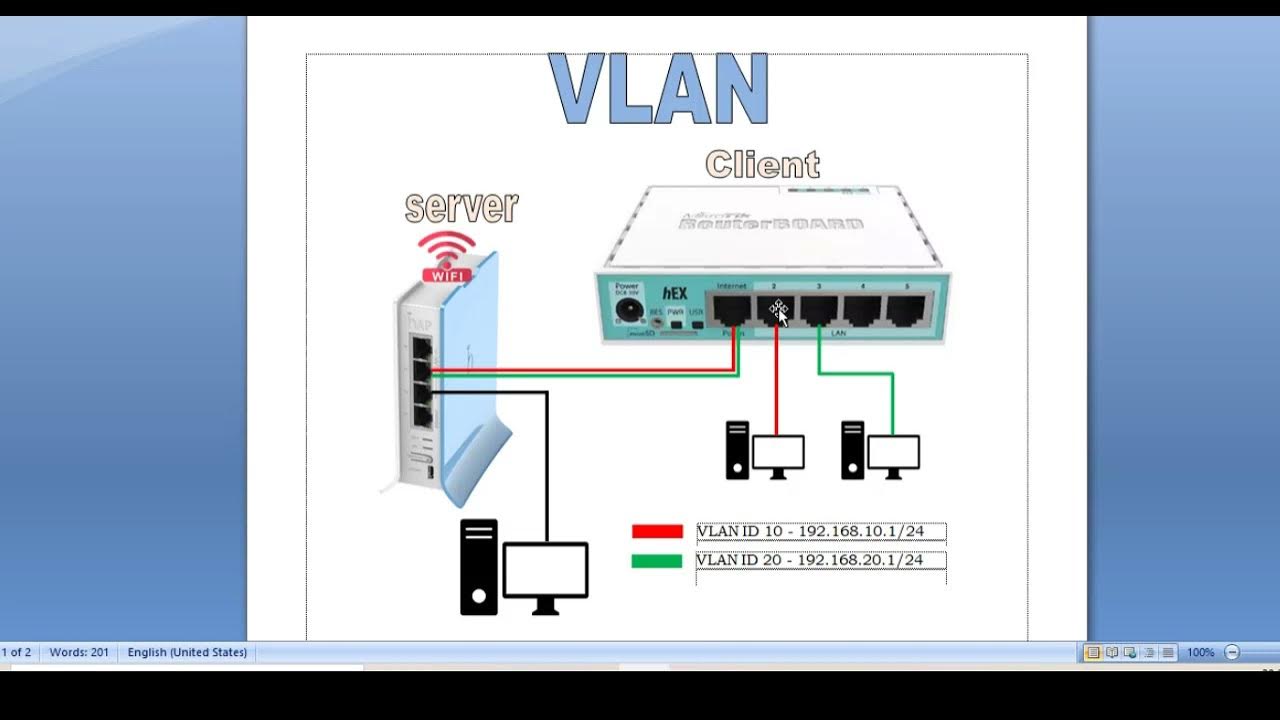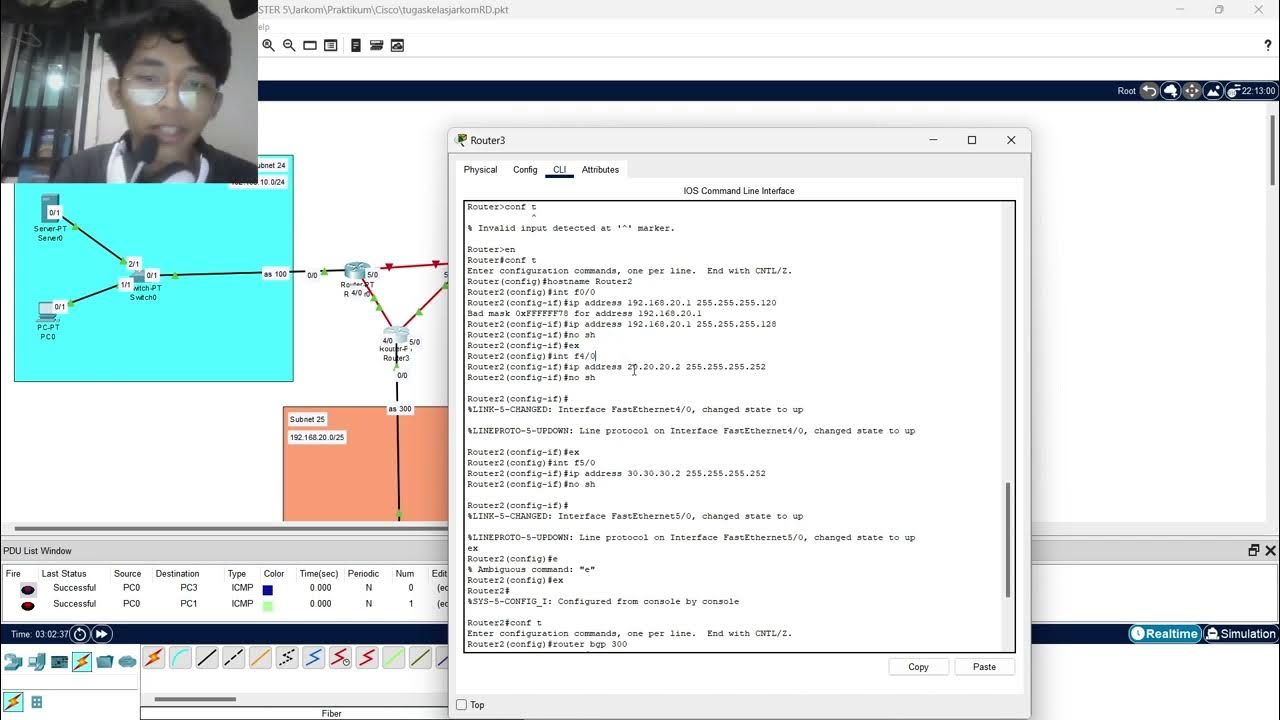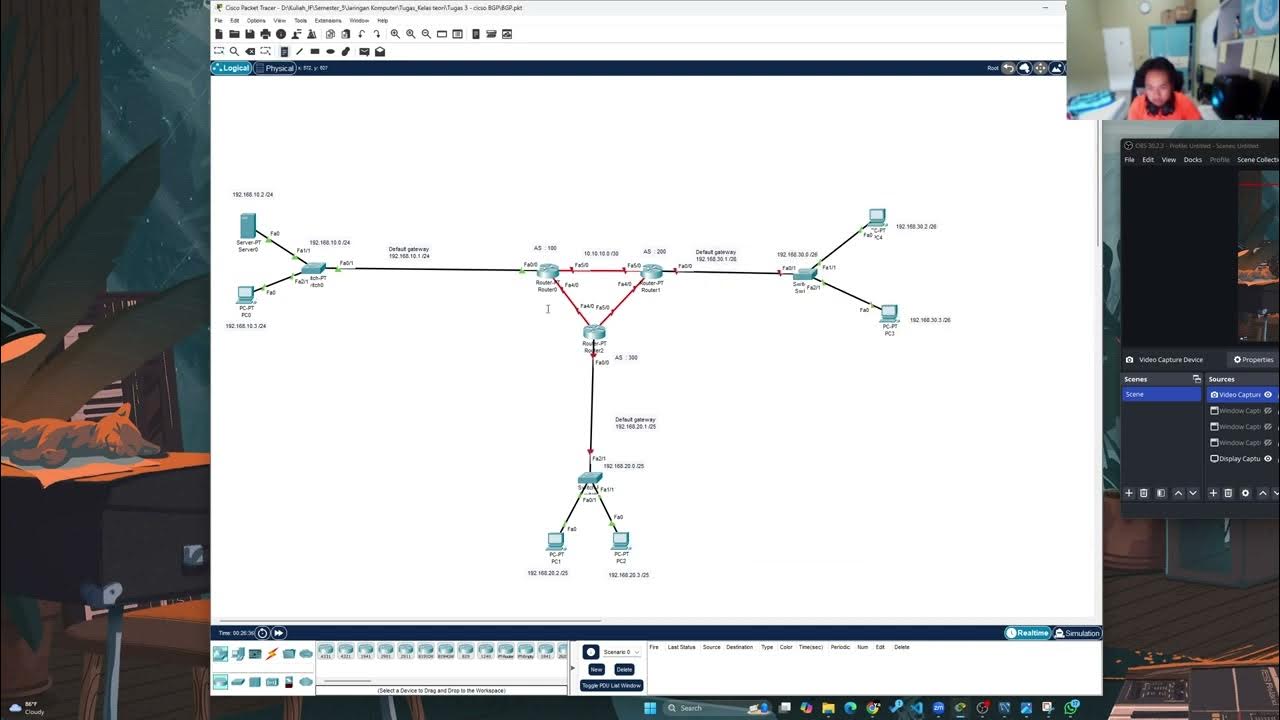Python + Cisco Network Automation (Automating DHCP, HSRP, OSPF and STP)
Summary
TLDRThis video demonstrates how Python scripting can automate network configuration tasks, including setting up DHCP, HSRP, OSPF, VLANs, and banners across multiple network devices. The presenter highlights the speed, scalability, and error reduction achieved through automation. By using a Python script (`ipvzero.py`), the process becomes more efficient and less prone to mistakes compared to manual configuration. With clear examples of verification commands, the tutorial emphasizes how automation streamlines network management, ensuring consistency and ease. The narrator hints at further in-depth Python scripting tutorials in future videos.
Takeaways
- 😀 Python automation can streamline network configuration, making the process faster and less prone to human error.
- 😀 The script starts by configuring basic settings such as banners, then moves on to switch configurations (e.g., Switch 3 and Switch 4) for both Distribution and Access layers.
- 😀 DHCP and HSRP configurations are applied on distribution switches to ensure proper network routing and redundancy.
- 😀 Access layer configurations involve assigning VLANs and ports in a systematic manner, with the first 4 ports allocated to the first two devices and the last 4 for the last two devices.
- 😀 OSPF router IDs (e.g., 2.2.2.2, 3.3.3.3, etc.) and Rapid Spanning Tree Protocol (RSTP) are set up for optimized routing and network topology.
- 😀 The use of Python allows for error-free sequential configuration of network devices, improving overall deployment speed and accuracy.
- 😀 After configuring each device, commands like `show standby brief`, `show run`, and `show ip ospf neighbor` are used to verify configurations.
- 😀 The `no ip domain-lookup` command is applied globally to prevent delays caused by DNS lookups when entering incorrect commands.
- 😀 The script demonstrates how quickly configurations can be deployed across multiple devices, saving time and reducing manual errors.
- 😀 Despite the script not being perfect, it serves as a good example of how Python can be used to automate and scale network management tasks efficiently.
- 😀 The presenter hints at creating more in-depth Python scripts in the future, showing a commitment to improving automation in network deployment.
Q & A
What is the main purpose of the Python script (ipvzero.py) in the video?
-The Python script (ipvzero.py) automates the process of configuring network devices, such as switches and routers, by setting up protocols like DHCP, HSRP, OSPF, and VLANs. It helps in quickly deploying network configurations and reduces the chances of human error during manual configuration.
How does the script interact with network devices to apply configurations?
-The script interacts with network devices by prompting the user for login credentials (username and password), then executing a series of pre-defined configuration commands for each device. It automates the configuration of various network protocols and settings sequentially, ensuring consistency and speed.
What role do the `getpass` module and username/password play in the script?
-The `getpass` module is used to securely prompt the user for a password without displaying it on the screen. The username (`john`) and password (`cisco`) are used to authenticate the user before the script proceeds with the configuration tasks on the network devices.
Why is the script designed to work sequentially, and how does that benefit the process?
-The script works sequentially to apply configurations in a controlled order. This reduces the risk of errors, as each configuration step is processed one at a time. It also ensures that configurations are applied consistently across all devices without missing any critical steps.
How does the script verify that the configurations were applied correctly?
-The script uses several verification commands such as `show standby brief`, `show ip ospf neighbor`, `show ip protocols`, and `show vlan` to check the status of HSRP, OSPF router IDs, and VLAN configurations. These commands help ensure that the configurations have been applied successfully.
What are some of the network protocols configured by the script, and why are they important?
-The script configures several important network protocols, including DHCP (Dynamic Host Configuration Protocol), HSRP (Hot Standby Router Protocol), OSPF (Open Shortest Path First), and Rapid Spanning Tree. These protocols are crucial for network reliability, IP address assignment, router redundancy, and efficient routing within the network.
What is the significance of the `show standby brief` command in the context of this script?
-The `show standby brief` command is used to display the status of HSRP (Hot Standby Router Protocol), which ensures network redundancy by identifying the active and standby routers. It helps verify the correct configuration of HSRP and ensures that the failover mechanism works properly.
How does the script handle VLAN configurations, and what does the `show vlan` command check?
-The script applies VLAN configurations to the network devices and uses the `show vlan` command to verify that the VLANs have been correctly configured on the switches. This command checks the VLAN assignments and ensures that the proper VLANs are active on the network devices.
What does the speaker mean by 'automated' and how does it reduce errors in network configurations?
-By 'automated,' the speaker refers to the process of using the script to automatically apply network configurations instead of doing it manually. Automation reduces human errors by eliminating the need for manual input, ensuring that configurations are applied consistently and accurately across all devices.
What potential improvements or modifications to the script does the speaker suggest?
-The speaker acknowledges that the script is not perfect and encourages viewers to improve it. They suggest that viewers can refine the script for better functionality, scalability, or deeper customization depending on the specific needs of the network being configured.
Outlines

Dieser Bereich ist nur für Premium-Benutzer verfügbar. Bitte führen Sie ein Upgrade durch, um auf diesen Abschnitt zuzugreifen.
Upgrade durchführenMindmap

Dieser Bereich ist nur für Premium-Benutzer verfügbar. Bitte führen Sie ein Upgrade durch, um auf diesen Abschnitt zuzugreifen.
Upgrade durchführenKeywords

Dieser Bereich ist nur für Premium-Benutzer verfügbar. Bitte führen Sie ein Upgrade durch, um auf diesen Abschnitt zuzugreifen.
Upgrade durchführenHighlights

Dieser Bereich ist nur für Premium-Benutzer verfügbar. Bitte führen Sie ein Upgrade durch, um auf diesen Abschnitt zuzugreifen.
Upgrade durchführenTranscripts

Dieser Bereich ist nur für Premium-Benutzer verfügbar. Bitte führen Sie ein Upgrade durch, um auf diesen Abschnitt zuzugreifen.
Upgrade durchführenWeitere ähnliche Videos ansehen

KONFIGURASI VLAN PADA ROUTERBOARD RB 941 - RB 750 - MIKROTIK TUTORIAL

UKK TKJ Paket 2 Tahun 2025 Full Versi Cepat

Aula 04 - Curso de Redes de Computadores Básico Mão na Massa - Gateway e Interface Vlan

Tugas Routing BGP pada Cisco Packet Tracer Jarkom RB Akhdan Arif Prayoga

Pembahasan UKK TKJ Paket 1 Tahun 2023/2024 - 2 Router Dynamic Routing ospf dengan RB 951-2HnD

Tugas Jarkom - Konfigurasti Dynamic Routing BGP menggunakan Cisco Packet Tracer
5.0 / 5 (0 votes)
